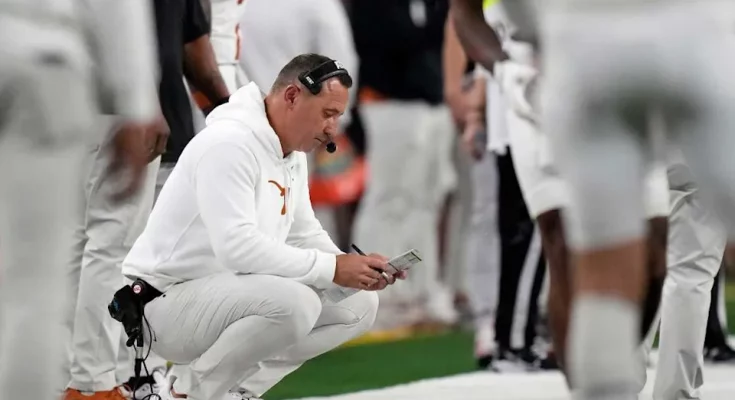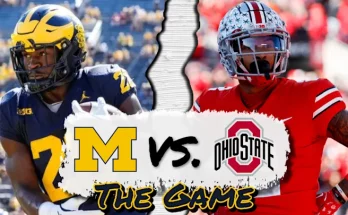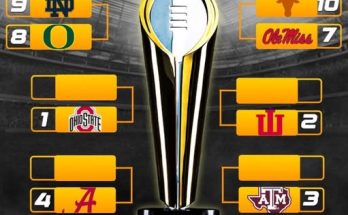The recruiting trail in college football has always been a place of uncertainty, drama, and constant competition. Every year, talented high school athletes receive offers from some of the biggest programs in the country, and once they commit, the job is far from over for both the school that landed them and the programs still in pursuit. The Texas Longhorns have been one of the hottest recruiting names in recent years, with Steve Sarkisian and his staff putting together impressive classes and drawing in blue-chip prospects who believe in the vision of Texas football returning to national prominence. However, as much as the Longhorns have celebrated their successes on the trail, the reality is that other programs, especially those in the Power 4, do not stop calling once a verbal commitment is made. This situation is exactly what two of Texas’ current commits are facing, as reports indicate that even though they are fully locked in with their pledges to the Longhorns, rival coaches are still aggressively recruiting them, hoping to flip their decision before National Signing Day.
Recruiting has always been about more than simply securing a “yes” from a high school athlete. In many ways, the hardest part begins after the commitment. Coaches know that a verbal commitment is non-binding and that young players are often swayed by attention, NIL opportunities, proximity to home, and the success of a program during the season. With Texas preparing to enter the SEC, the stakes are even higher. The Longhorns are not just recruiting for today but also building for their future as they transition into the most competitive conference in college football. That fact alone has made their top commits even more valuable targets for rival Power 4 programs that recognize how transformative it would be to add a player talented enough to have caught Texas’ eye.
The two players in question have publicly expressed that they are one hundred percent committed to Texas. They have embraced the program, built bonds with future teammates, and bought into Sarkisian’s message of “embrace the grind” and “be part of Texas’ resurgence.” Yet, in the background, phone calls, texts, and visits from rival coaches continue to come in. Programs in the SEC, Big Ten, and ACC know that Texas’ footprint is a recruiting hotbed, and if they can peel away even one elite player from the Longhorns’ class, it is not just a win for them but also a blow to Texas. This aggressive persistence from rival schools is not unusual; in fact, it is part of the modern recruiting game, where no pledge is considered safe until the pen hits the paper during signing day.
For Texas fans, the news that other schools are still pushing hard for these commits is both nerve-wracking and affirming. On one hand, it is stressful to know that the players they are already envisioning in burnt orange are being courted heavily by schools like Alabama, Georgia, Michigan, Ohio State, and Florida State. On the other hand, the level of pursuit validates just how special these commitments are. If they weren’t elite talents, rival coaches wouldn’t waste their time. The Longhorns are not just landing highly-ranked players—they are landing the exact kinds of players that championship contenders covet. That is the type of recruiting battle Texas must win consistently in order to establish itself as a true SEC powerhouse.
From the players’ perspective, staying locked in with Texas despite constant recruiting pressure demonstrates a maturity and confidence in their decision that not every high school athlete possesses. Many recruits are drawn to the attention and will reopen their recruitment just to see what other programs will put on the table. These two commits, however, appear to have shut down the process internally, making it clear that they are Longhorns no matter what comes their way. Still, rival coaches will not take “no” for an answer so easily. Recruiting departments at competing schools understand that all it takes is one change in circumstances—a disappointing season for Texas, a coaching staff shakeup, or a massive NIL deal—to reopen the door. That is why the pursuit continues.
This tug-of-war illustrates why Texas’ recruiting staff works tirelessly even after securing verbal commitments. Sarkisian and his assistants know that their work doesn’t end once a player tweets out “I’m committed to Texas.” It is about maintaining relationships, consistently reinforcing the vision, and ensuring that recruits feel prioritized. The staff often reminds players that they are not just building a team for next season but laying the foundation for Texas’ run in the SEC. The narrative that Texas will be competing against the likes of Alabama, Georgia, LSU, and Florida every year has been a powerful recruiting tool. Young athletes want to play against the best, and the Longhorns’ move has given them a platform to do so while also being part of a storied program with deep tradition.
At the same time, Power 4 schools looking to flip Texas’ commits are selling their own narratives. A program like Alabama can point to Nick Saban’s track record of sending players to the NFL and winning national championships. Georgia can highlight back-to-back championships and a culture of dominance. Ohio State can emphasize its offensive machine and history of producing first-round wide receivers and quarterbacks. Florida State can appeal to its recent resurgence and the chance to be a key part of a team returning to glory. Every school has its pitch, and for recruits, hearing these messages can create doubt or at least curiosity. That is why Texas must continue to solidify these commitments through consistent communication and delivering on the field during the season.
One of the most critical factors in holding on to commits in the modern era is NIL. Name, Image, and Likeness deals have changed the landscape of college football recruiting forever. Players are not just choosing schools based on tradition, scheme, or winning anymore—they are evaluating which program can help maximize their brand and financial opportunities. Texas, with its massive alumni base, market reach, and NIL infrastructure, has positioned itself as one of the leaders in this space. However, other programs are catching up fast. If a rival school offers a more lucrative NIL package, it can sway even the most loyal recruit. This is why some Texas fans watch these situations closely, knowing that the financial arms race is real and ongoing.
Beyond NIL and recruiting pitches, one of the strongest anchors Texas has with these two commits is the sense of brotherhood and vision they have already embraced. Many recruits form tight-knit bonds with other commits, future teammates, and current players during the recruiting process. This creates a type of peer pressure that can be more powerful than any coach’s phone call. When a recruit feels like they are already part of the Texas family, flipping becomes emotionally harder. Sarkisian has been intentional about fostering this culture among his recruiting classes, encouraging players to recruit each other and take pride in building something special together. This internal commitment can sometimes outweigh external noise.
For the Power 4 programs still in pursuit, the goal is persistence. Coaches often know they may not succeed in flipping a player, but they keep the lines of communication open just in case. Sometimes, situations change late in the cycle—a coach leaves, a team underperforms, or family circumstances shift. When that happens, a player who once was “locked in” might take another look. Rival programs want to be ready if that door opens, and that is why they never completely give up. It is also a strategy to keep Texas on its toes, forcing the Longhorns to stay engaged rather than complacent.
Ultimately, the recruiting drama surrounding these two Texas commits is emblematic of the larger picture of college football recruiting in 2025. Verbal commitments no longer mean finality, especially when it involves blue-chip prospects heading to a program on the rise. The Longhorns may have these players locked in today, but the reality is that the battle continues until signatures are on paper. For Texas fans, that means staying patient, trusting the staff, and understanding that this type of attention comes with the territory of being a national contender again. For the players, it means standing firm in their decisions, embracing the commitment they’ve made, and ignoring the constant noise from rival recruiters.
If these two recruits do hold firm through signing day, it will be a significant win for Texas—not only because of their talent but because it shows that Sarkisian and his staff can withstand the pressure from other elite programs and keep their class intact. That is the type of momentum Texas will need as it enters the SEC, where recruiting battles are constant and unforgiving. The Longhorns’ ability to close on these players and fend off persistent Power 4 competition will be a true measure of their readiness to compete at the highest level of college football. Until then, the phones will keep ringing, the pitches will keep coming, and the drama of recruiting will continue to play out in a way that reminds everyone why it is the lifeblood of college football.



